
Why Are North American Black Walnut Pendant Lights Expensive?
In the lighting market, North American black walnut chandeliers consistently sit at the top of the pricing pyramid — commanding significantly higher prices than most standard wood fixtures.
In contrast, chandeliers made from visually similar but more common woods tend to be much more affordable.
This often leaves people wondering: “What exactly makes it worth the price?”
Today, let’s break down the value behind this so-called “noble of the wood world” by looking at three key aspects: material attributes, market dynamics, and the truth behind real vs. fake walnut.
From Tree to Fixture: Black Walnut Is Born to Be Premium
North American Black Walnut is widely recognized as one of the finest hardwoods in the world. Its high price tag isn’t just a trend — it’s the result of natural rarity and inherent quality embedded in its very DNA. Specifically, black walnut stands out in three major ways:
Visual Appeal Meets Tactile Luxury
With a rich, chocolate-brown hue and a silky-smooth texture, black walnut delivers a visual and tactile experience that most other hardwoods simply can’t match. Its natural luster and depth bring a sense of warmth and elegance.
Exceptional Strength and Stability
Compared to typical hardwoods, black walnut is approximately 30% harder. It resists warping and bending, making it an ideal material for chandeliers and other fixtures where long-term structural integrity is essential.
Incredibly Rare and Limited
Black walnut grows slowly — taking over 50 years to mature. Even then, only 30–40% of the lumber from a single tree is usable for high-end furniture. Pieces that meet the highest FAS grade standards are even rarer.
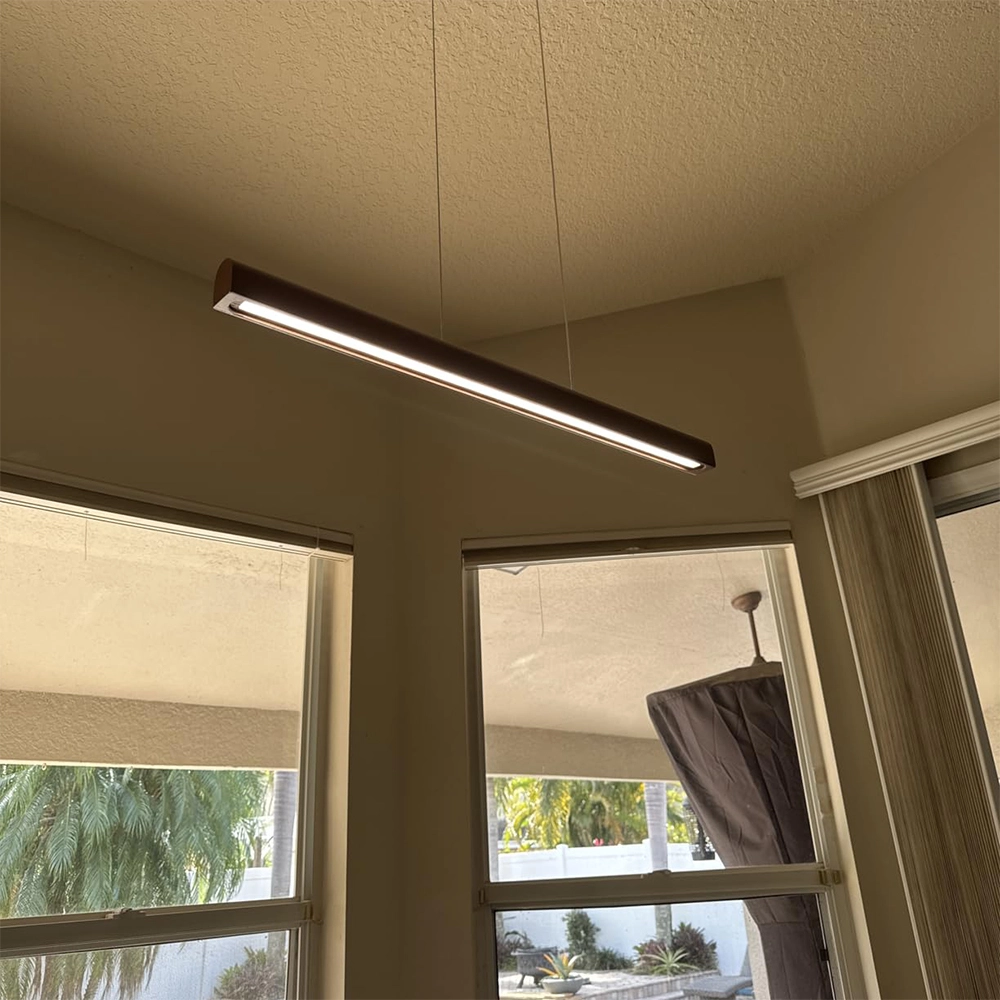
But what truly sets black walnut apart is the artistic uniqueness of its grain. Its natural patterns aren’t straight or uniform; instead, they form intricate parabolic curves, flame-like waves, or scenic, abstract lines influenced by age rings, soil, and internal vascular structure. No two pieces of black walnut look the same — which means every chandelier is a one-of-a-kind work of nature-made art.
Many designers intentionally preserve the raw edge or face of the wood to showcase these natural grains, turning the fixture itself into a visual centerpiece. This authentic expression of nature’s design perfectly aligns with today’s consumer taste for organic texture and understated luxury.
On top of all this, black walnut is rich in natural oils that help slow oxidation. Even after ten years or more, the wood gradually transitions from deep brown to a warm, amber patina — developing a character that feels seasoned and soulful. It’s a kind of living beauty that metal or plastic fixtures simply can’t replicate.
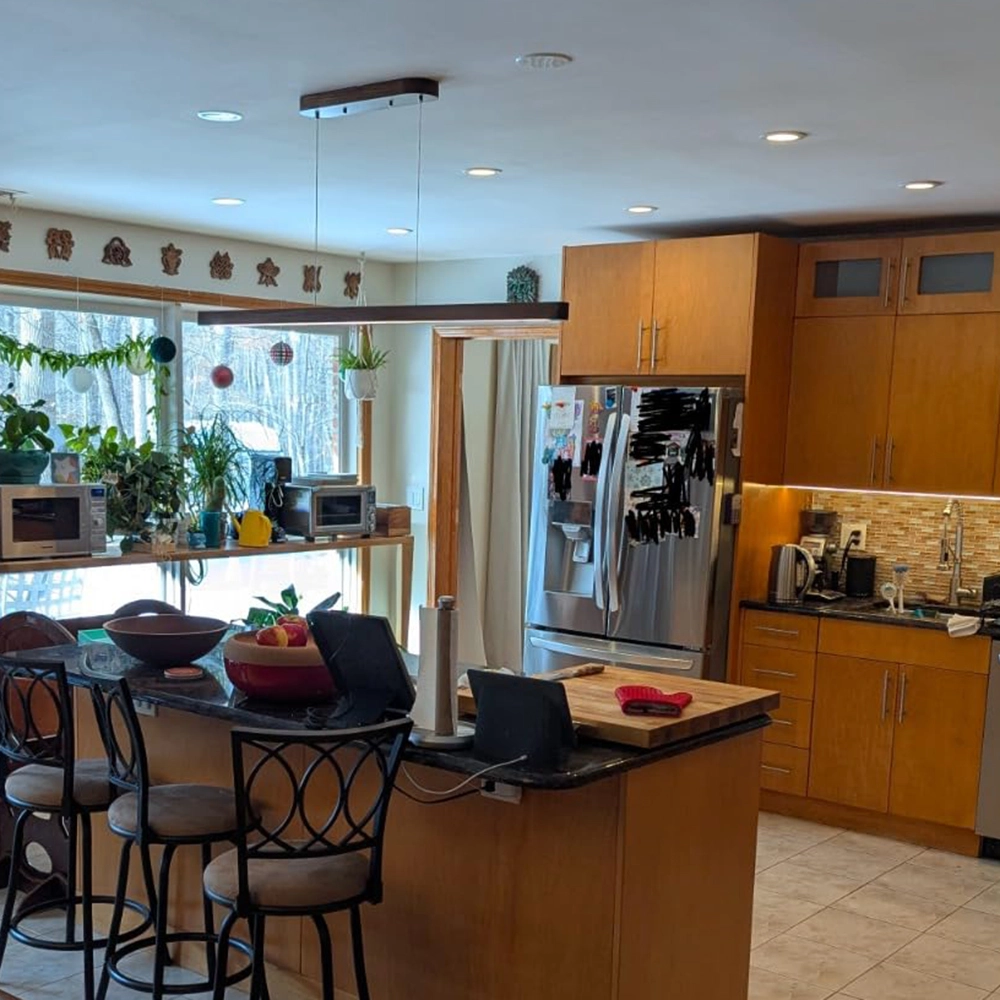
From Forest to Showroom: Black Walnut Is Pricey Because Everyone Wants It
There’s an old saying in the wood industry: “Price follows popularity.” No matter how good a material is, if no one wants it, it ends up as warehouse inventory.
North American black walnut is the exact opposite — a core material that’s remained in high demand across the high-end custom lighting and furniture markets for years.
Just scroll through Pinterest, flip through design magazines, or watch popular home renovation influencers — black walnut is always trending. Especially when it comes to statement pieces like chandeliers, dining tables, or sideboards, this wood has practically become shorthand for taste and sophistication.
Many interior designers even say outright: “If the client has the budget, I’ll always recommend black walnut.”
So why is it so beloved?
On one hand, its deep natural tone and organic grain make it a perfect match for upscale interior styles like modern, wabi-sabi, and minimalist.
On the other, it carries a natural warmth and visual weight that helps soften stark, clean spaces — creating a sense of balance.
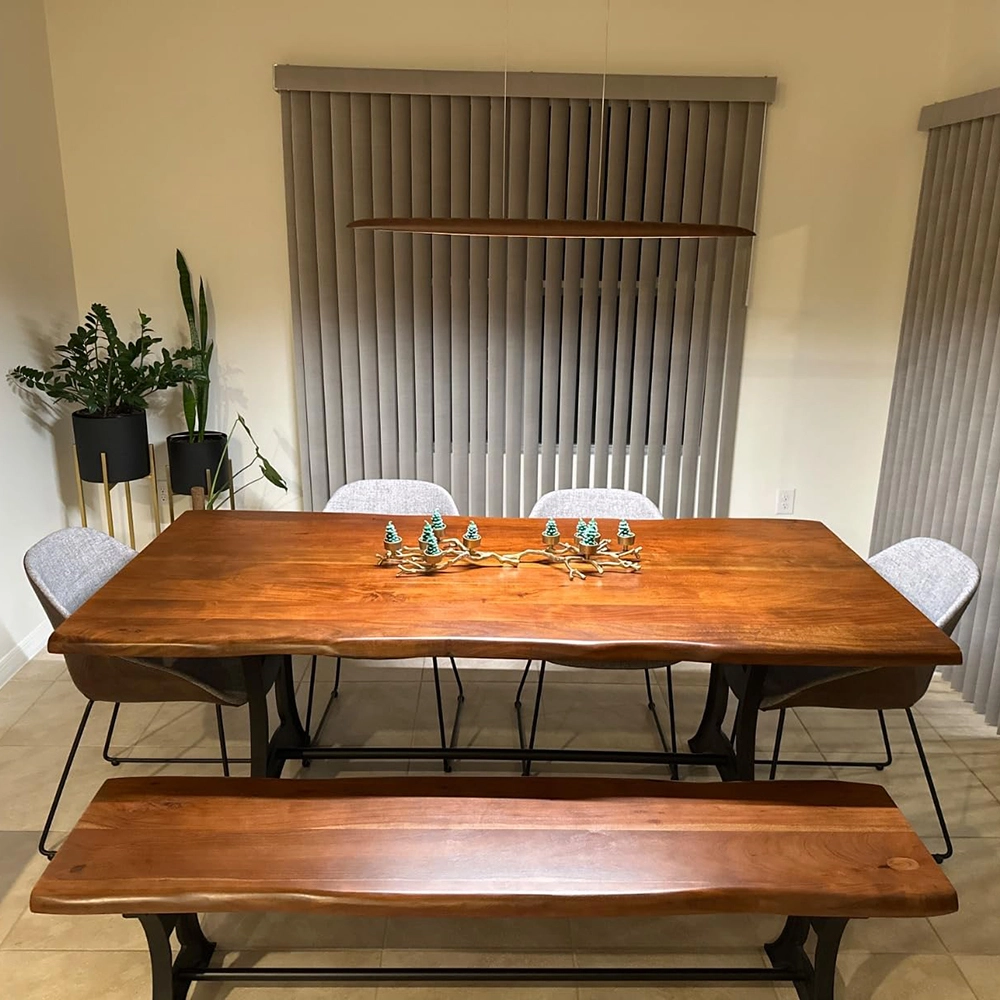
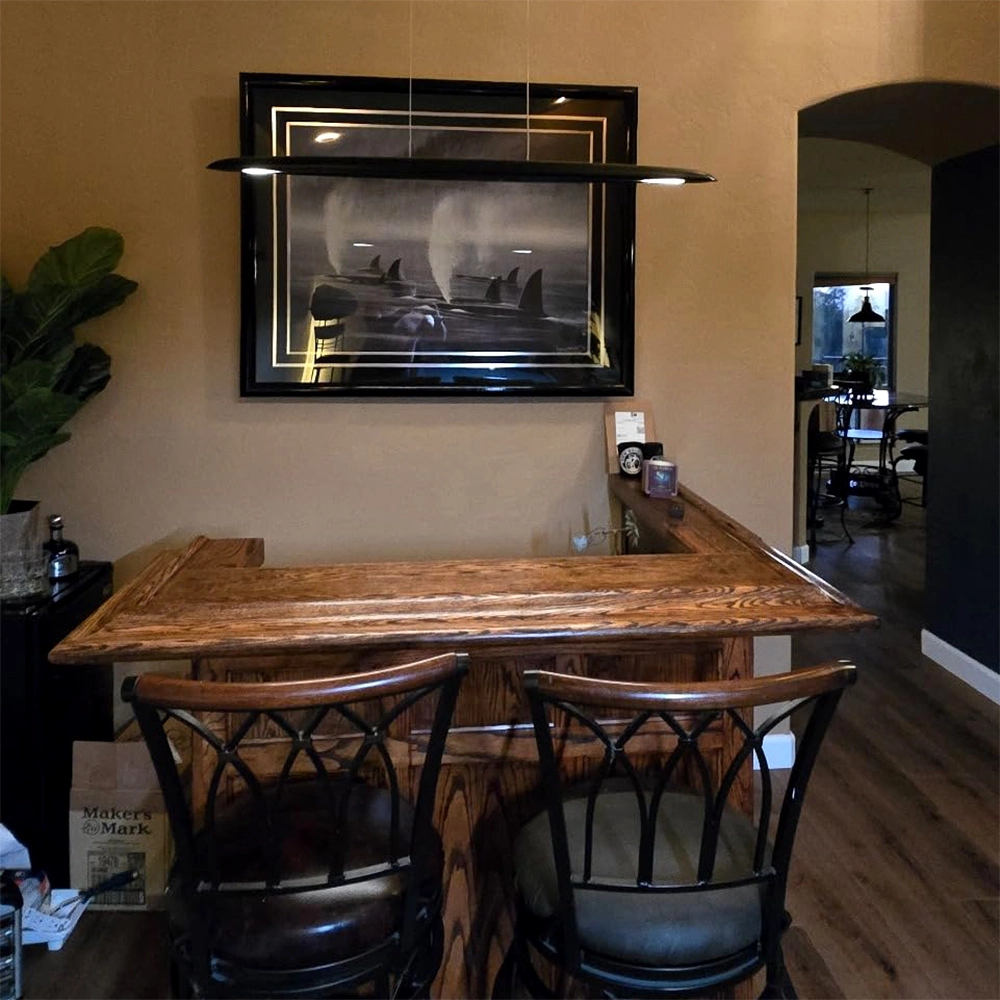
For us in the lighting business, black walnut is almost the ideal material. It’s structurally stable, finishes beautifully, and plays exceptionally well with light — adding visual depth and texture.
A chandelier made from genuine North American black walnut brings a space to life. Whether it’s hanging in a living room, dining area, or study, the way the wood grain subtly shifts and glows under warm lighting gives the feeling that the space itself is breathing.
Many of our customers fall in love with walnut chandelier and come back to purchase matching wall sconces or floor lamps from the same collection.
On the supply side, the story is just as clear: as global demand for black walnut continues to rise, so do raw material prices.
And it’s not just hype — it’s a reflection of real, growing demand from designers and high-end furniture makers around the world.
The truth is, quality walnut lumber is becoming harder and harder to source. Most of the top-grade black walnut is now pre-booked by premium furniture brands and custom lighting studios. If you manage to get your hands on a well-crafted black walnut chandelier, you’re already one of the lucky ones.
So that “expensive” price tag? It’s not just marketing — it’s the real cost of rare material, fine craftsmanship, and strong demand across the board.
Hard to Tell the Real from the Fake: North American Black Walnut ≠ South American Walnut
If you’ve ever shopped for walnut furniture or lighting, you’ve probably heard terms like South American Black Walnut or African Black Walnut. They sound similar, but in reality, they are completely different.
Let’s take a simple comparison:
Comparison Item | North American Black Walnut (Black Walnut) | South American Walnut (Rainwood) |
Origin | North America (primarily the U.S.) | South America |
Botanical Family | Juglandaceae (Walnut family) | Fabaceae (also known as Rainwood) |
Color | Deep chocolate brown with rich luster | Yellowish or reddish tones |
Grain Pattern | Highly varied, artistic, natural textures | Straight and relatively uniform |
Price | High-end; can cost tens of thousands | Affordable; often within a few thousand |
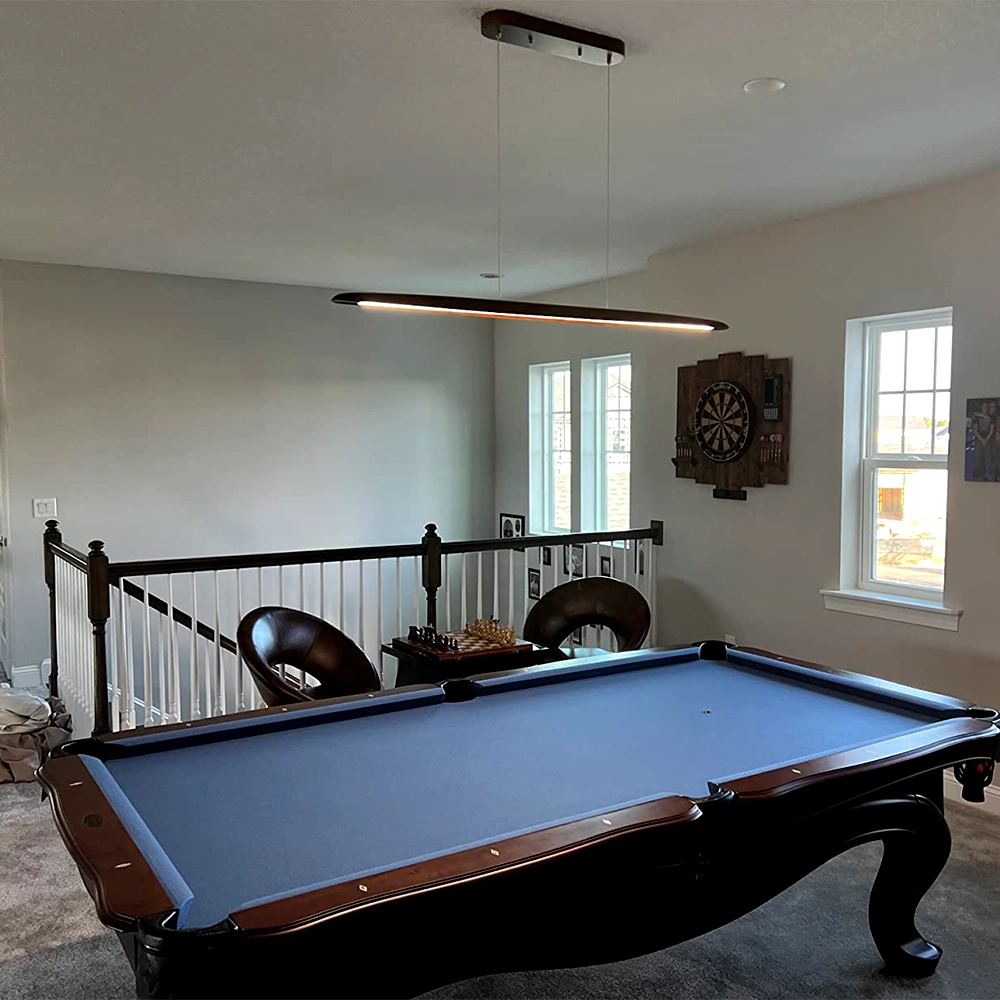
In fact, these two not only belong to different species and families, but also differ greatly in texture, and their positioning in the high-end home design market is worlds apart.
North American Black Walnut is a member of the Juglandaceae family and the genus Juglans. It is a true high-grade hardwood, naturally featuring a deep brown tone, oily texture, unique luster, and durability that are all naturally formed and impossible to replicate.
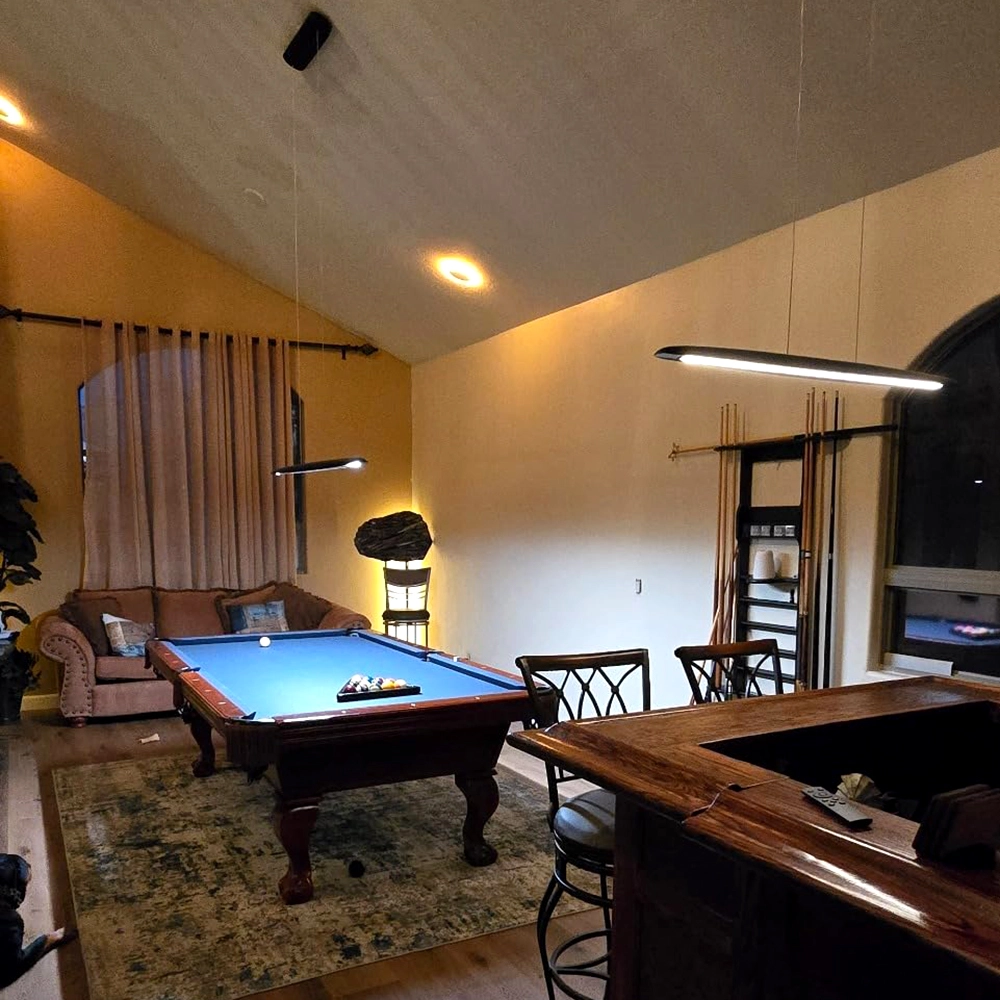
It is widely recognized as a premium material for making high-end furniture and lighting fixtures. With a scarce global annual yield, every finished piece represents precious raw material and meticulous craftsmanship.
South American Walnut, originally called Rainwood, only has a color somewhat close to brown, which many sellers exploit by using confusing names to ride on the coattails of Black Walnut’s reputation.
This wood is far inferior to Black Walnut in physical properties, oil content, stability, and aesthetic appeal, and is priced much lower. Even when coated with dark stains to imitate Black Walnut’s appearance, it still cannot reproduce the natural luster and the aging character that develop over time.
Especially in categories like lighting, where material beauty and structural stability are paramount, differences in wood selection lead to differences in texture and durability that cannot be compensated for by merely similar appearances.
So, if you see a lighting fixture labeled as Black Walnut but priced suspiciously low, don’t be fooled by the name alone. Genuine North American Black Walnut comes with a high price and strict certification, and every product reflects its weight, texture, and time-earned value. Its cost is justified and deserving of respect.
Categories
Recent Posts
-
 Can I Give A Wood Lamp as A Gift?26 Jun 2025
Can I Give A Wood Lamp as A Gift?26 Jun 2025 -
 Natural Wood Finishes Compared: Wood Wax Oil, Beeswax & Varnish25 Jun 2025
Natural Wood Finishes Compared: Wood Wax Oil, Beeswax & Varnish25 Jun 2025 -
 Wood Wax Oil: Natural Finish for Furniture, Floors & Lights25 Jun 2025
Wood Wax Oil: Natural Finish for Furniture, Floors & Lights25 Jun 2025 -
 Why Are North American Black Walnut Pendant Lights Expensive?25 Jun 2025
Why Are North American Black Walnut Pendant Lights Expensive?25 Jun 2025 -
 Round vs Linear Living Room Lights: 3 Ways to Choose What Feels Right20 Jun 2025
Round vs Linear Living Room Lights: 3 Ways to Choose What Feels Right20 Jun 2025




